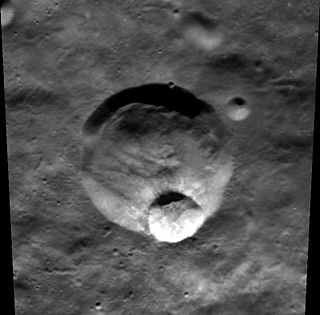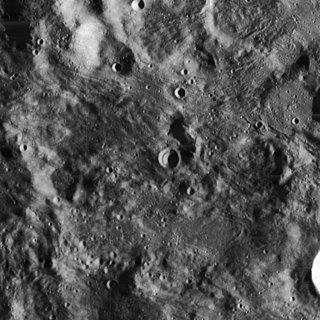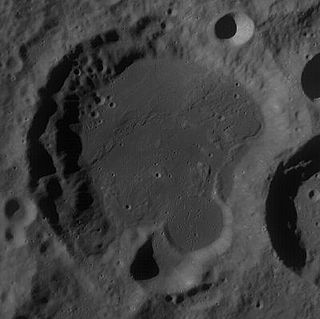Vallis Planck is a long, linear valley located on the far side of the Moon. It is oriented radially to the huge Schrödinger basin, and was most likely formed by that impact. The selenographic coordinates of this feature are 58°24′S126°06′E / 58.4°S 126.1°E , and it has a length of 451 km.

The Moon is an astronomical body that orbits planet Earth and is Earth's only permanent natural satellite. It is the fifth-largest natural satellite in the Solar System, and the largest among planetary satellites relative to the size of the planet that it orbits. The Moon is after Jupiter's satellite Io the second-densest satellite in the Solar System among those whose densities are known.

In classical geometry, a radius of a circle or sphere is any of the line segments from its center to its perimeter, and in more modern usage, it is also their length. The name comes from the Latin radius, meaning ray but also the spoke of a chariot wheel. The plural of radius can be either radii or the conventional English plural radiuses. The typical abbreviation and mathematical variable name for radius is r. By extension, the diameter d is defined as twice the radius:
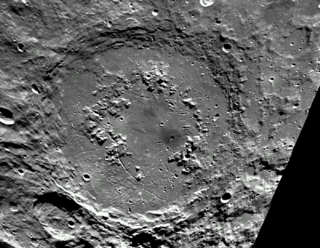
Schrödinger is a large lunar impact crater of the form traditionally called a walled plain and is named after Erwin Schrödinger. It is located near the south lunar pole on the far side of the Moon, and can only be viewed from orbit. The smaller crater Ganswindt is attached to the southwestern rim of Schrödinger, and intrudes slightly into the inner wall. Adjacent to the south is the crater Nefed'ev. Farther to the southwest is the crater Amundsen.
This cleft in the surface crosses the western part of the huge walled plain Planck, and it was named after that feature (which has an eponym of Max Planck). The southern edge closest to Schrödinger begins near the northeastern outer rampart of the crater Grotrian. It then continues to the north-northwest, where it suffers a disruption where it crosses the crater Fechner. The remainder of the feature continues to the northwestern outer rim of the walled plain Planck, until terminating near Pikel'ner K.

Planck is a large lunar impact crater, approximately 319 kilometers in diameter, that is located in the southern hemisphere of the Moon, on the far side as seen from the Earth. It lies to the west of the walled plain Poincaré, another enormous formation only slightly larger than Planck. Both formations are larger than the walled plain Bailly, the largest crater on the near side. Lying across the southeast rim of Planck is the crater Prandtl, to the northeast is Hildegard, and to the west is Fechner.
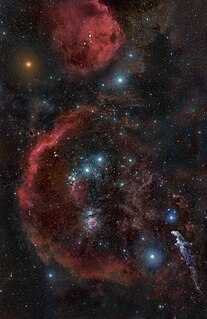
An eponym is a person, place, or thing after whom or after which something is named, or believed to be named. The adjectives derived from eponym include eponymous and eponymic. For example, Elizabeth I of England is the eponym of the Elizabethan era, and "the eponymous founder of the Ford Motor Company" refers to Henry Ford. Recent usage, especially in the recorded-music industry, also allows eponymous to mean "named after its central character or creator".
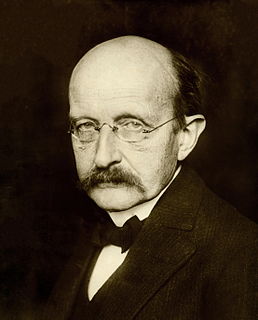
Max Karl Ernst Ludwig Planck, ForMemRS was a German theoretical physicist whose discovery of energy quanta won him the Nobel Prize in Physics in 1918.
